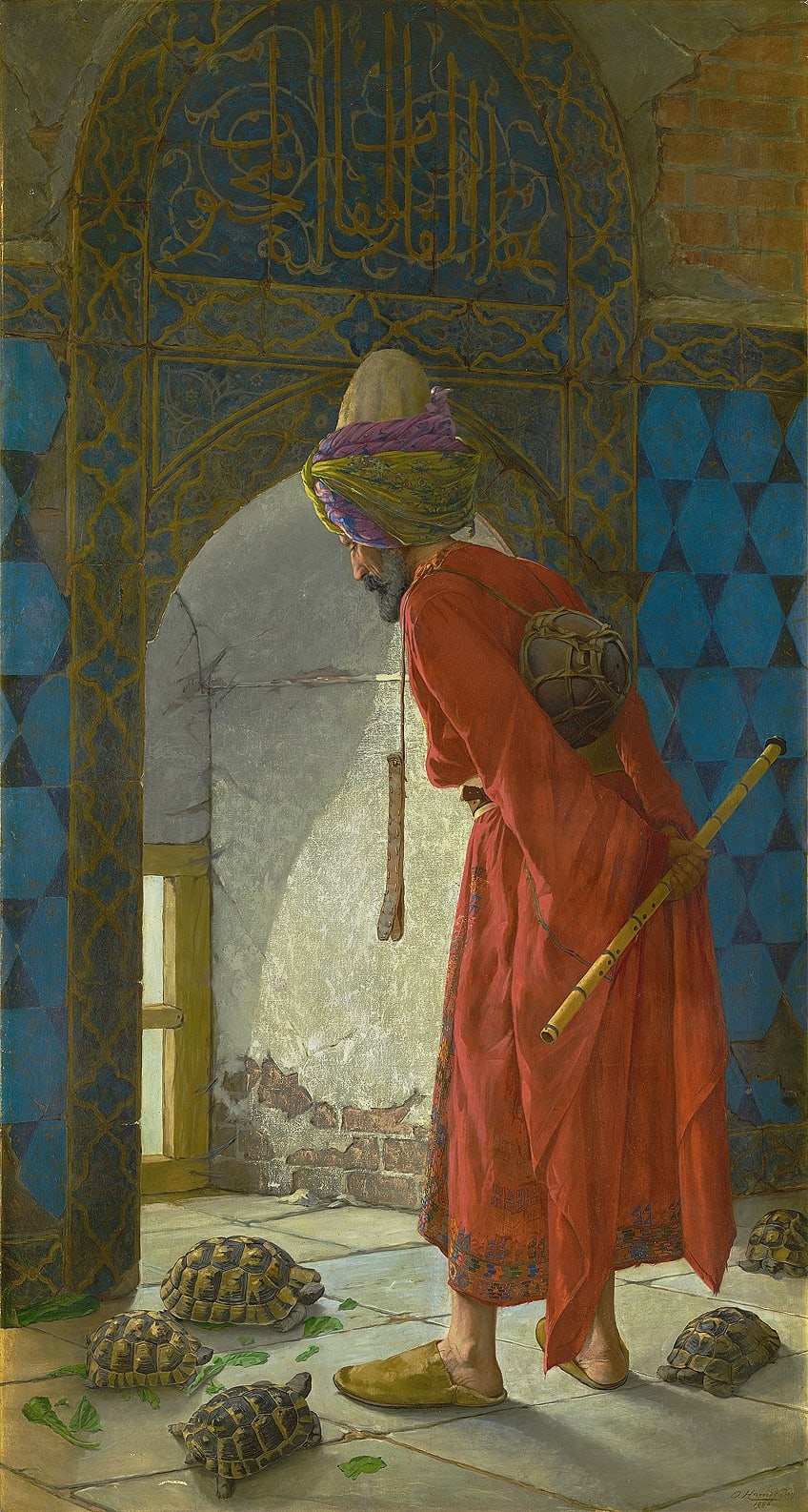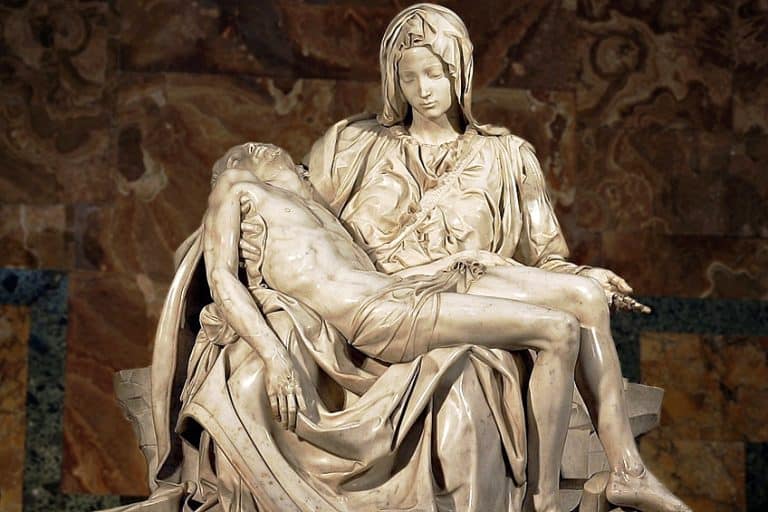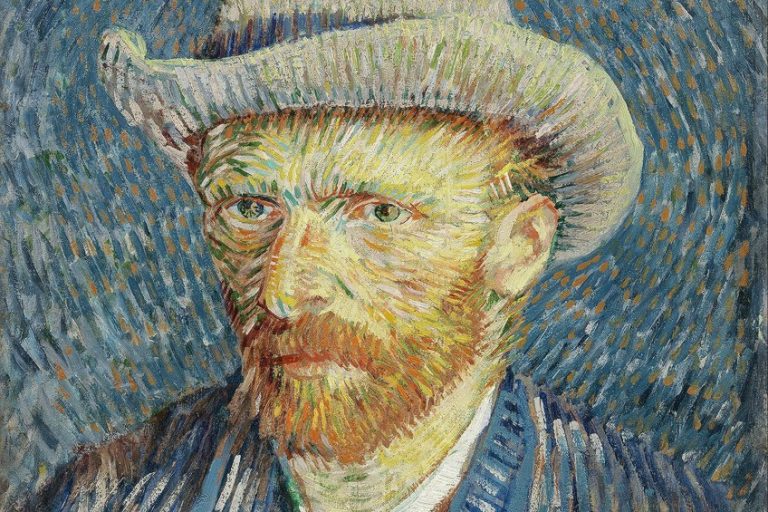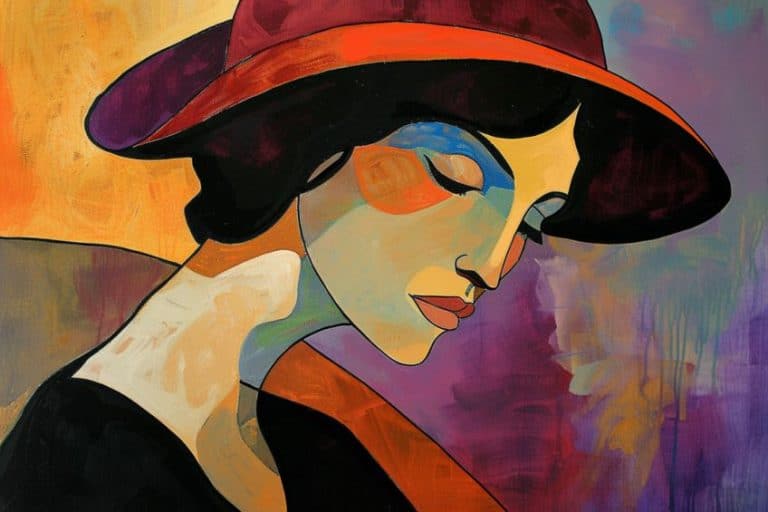10 Turkish Painters – Brushstrokes of Anatolia
Turkey has a rich and diverse artistic heritage, with a plethora of talented artists who have made significant contributions to various art movements and styles. From traditional Ottoman art to contemporary avant-garde expressions, Turkish artists have captivated audiences worldwide with their creativity, innovation, and unique cultural perspectives. In this article, we will explore some of the top Turkish artists whose works have left a lasting impact on the art world, showcasing their talent, vision, and the vibrant art scene in Turkey.
Table of Contents
- 1 A Look at Turkish Art
- 2 Top 10 Turkish Painters to Know
- 2.1 Osman Hamdi Bey (1842 – 1910)
- 2.2 Nazmi Ziya Güran (1881 – 1937)
- 2.3 İbrahim Çallı (1882 – 1960)
- 2.4 Şeref Akdik (1902 – 1995)
- 2.5 Fikret Mualla (1903 – 1967)
- 2.6 Bedri Rahmi Eyüboğlu (1911 – 1975)
- 2.7 Abidin Dino (1913 – 1993)
- 2.8 Burhan Doğançay (1929 – 2013)
- 2.9 Eren Eyüboğlu (1930 – 1985)
- 2.10 İsmail Acar (Born 1969)
- 3 Frequently Asked Questions
A Look at Turkish Art
Art from Turkey reflects a rich tapestry of cultural influences, spanning centuries of history and embracing diverse artistic traditions. Traditional Turkish art, deeply rooted in Islamic and Ottoman heritage, encompasses exquisite examples of calligraphy, miniature painting, ceramics, and decorative arts, showcasing intricate patterns, vibrant colors, and symbolic motifs. This heritage is celebrated in contemporary Turkish art, where artists blend traditional techniques with modern interpretations, addressing themes of identity, politics, and social issues, contributing to a dynamic and evolving art scene.

Moreover, Turkey’s geographical and cultural crossroads have fostered a unique fusion of artistic styles and ideas, attracting artists from various backgrounds to explore and create within its vibrant artistic landscape. From the vibrant street art scene in Istanbul to the avant-garde installations in contemporary galleries, Turkish art offers a captivating journey through history, culture, and innovation, reflecting the country’s complex and ever-evolving identity on the global stage.
Top 10 Turkish Painters to Know
In this section, we delve into the lives and artistic contributions of 10 notable Turkish artists who have left an indelible mark on the art world. Spanning different eras and styles, these artists represent the rich diversity and creative vitality of Turkish art. From pioneers of modernism to contemporary masters, each artist’s unique journey, innovative techniques, and profound themes have shaped the trajectory of Turkish art and garnered international acclaim.
Join us as we explore the captivating works and fascinating stories behind the top 10 Turkish artists, celebrating their lasting impact on the global art scene.
Osman Hamdi Bey (1842 – 1910)
| Birth | 1842 |
| Death | 1910 |
| Place of Birth | Istanbul, Ottoman Empire (now Turkey) |
| Genre of Work | Painting, Archaeology, and Museology |
Osman Hamdi Bey was a prominent figure in 19th-century Ottoman art and culture. Initially trained as a lawyer, he later pursued his passion for art and studied painting in Paris. His career flourished as he became known for his historical and genre paintings, often depicting scenes from everyday life and historical events. One of his most famous works is “The Tortoise Trainer,” which combines elements of Orientalism with a critical view of Ottoman society.
Beyond painting, Osman Hamdi Bey was also a pioneer in archaeology, serving as the director of the Istanbul Archaeology Museums and making significant contributions to the preservation and study of Turkey’s cultural heritage.

Nazmi Ziya Güran (1881 – 1937)
| Birth | 1881 |
| Death | 1937 |
| Place of Birth | Üsküdar, Istanbul, Ottoman Empire (now Turkey) |
| Genre of Work | Painting and Impressionism |
Nazmi Ziya Güran was a leading figure in Turkish art during the early Republican era. He studied in Paris and was influenced by Impressionism and Post-Impressionism, which is reflected in his landscape paintings characterized by vibrant colors and dynamic brushwork. Güran played a crucial role in the development of modern Turkish art, advocating for artistic freedom and experimentation. Notable works include “View from the Galata Tower” and “Istanbul from Pera.” He also contributed to art education as a teacher and administrator, leaving a lasting impact on future generations of Turkish artists.

İbrahim Çallı (1882 – 1960)
| Birth | 1882 |
| Death | 1960 |
| Place of Birth | Istanbul, Ottoman Empire (now Turkey) |
| Genre of Work | Painting and Realism |
İbrahim Çallı was a pioneering figure in Turkish painting, known for his realistic and symbolic artworks depicting Turkish life and culture. He studied at the Academy of Fine Arts in Istanbul and later in Paris, where he was influenced by European art movements such as Realism and Symbolism. Çallı’s paintings often portrayed Anatolian peasants and rural landscapes with a deep sense of empathy and social consciousness. His notable works include “The Smoker” and “The Peasant Girl,” which capture the essence of everyday life in a changing society.
He also contributed to art education as a professor, influencing many Turkish artists with his techniques and themes.

Şeref Akdik (1902 – 1995)
| Birth | 1902 |
| Death | 1995 |
| Place of Birth | Istanbul, Ottoman Empire (now Turkey) |
| Genre of Work | Painting and Realism |
Şeref Akdik was a versatile artist known for his contributions to Turkish painting and sculpture. He studied at the Istanbul Academy of Fine Arts and later in Paris, where he was exposed to modernist influences. Akdik’s early works reflected a blend of traditional Ottoman motifs with modernist approaches, exploring themes of identity and cultural heritage. Over the years, his style evolved to encompass abstract and expressive forms, showcasing a dynamic range of artistic expression.
Notable works include “Anatolian Women” and “Prayers.” Akdik’s career spanned several decades, during which he made significant contributions to the development of modern Turkish art.
Fikret Mualla (1903 – 1967)
| Birth | 1903 |
| Death | 1967 |
| Place of Birth | Istanbul, Ottoman Empire (now Turkey) |
| Genre of Work | Painting and Expressionism |
Fikret Mualla was a prominent Turkish painter known for his avant-garde and expressionist works. He studied in Paris and was influenced by European art movements such as Fauvism and Cubism, which he integrated into his unique style characterized by bold colors and dynamic compositions. Mualla’s paintings often explored themes of human emotions, existentialism, and the subconscious mind, reflecting a deep introspection and psychological depth. Notable works include “Self-Portrait” and “The Black Cat,” which showcase his mastery of color and form.
Mualla’s contributions to Turkish art were significant, marking him as a key figure in the country’s modernist movement.

Bedri Rahmi Eyüboğlu (1911 – 1975)
| Birth | 1911 |
| Death | 1975 |
| Place of Birth | Görele, Giresun, Ottoman Empire (now Turkey) |
| Genre of Work | Painting, Sculpture, and Poetry |
Bedri Rahmi Eyüboğlu was a prominent Turkish poet, painter, and sculptor known for his contributions to the modernist movement in Turkey. Trained at the Academy of Fine Arts in Istanbul, he was influenced by Cubism and Surrealism, which he integrated into his works characterized by geometric forms and dreamlike imagery. Eyüboğlu’s art often depicted scenes from Anatolian life, emphasizing the connection between nature and humanity. Notable works include “The Fisherman” and “The Olive Tree.” Apart from his artistic endeavors, Eyüboğlu was also a prolific writer and intellectual, contributing to Turkish literature and cultural discourse.

Abidin Dino (1913 – 1993)
| Birth | 1913 |
| Death | 1993 |
| Place of Birth | Istanbul, Ottoman Empire (now Turkey) |
| Genre of Work | Painting, Sculpture, and Printmaking |
Abidin Dino was a prominent Turkish painter and sculptor known for his surrealistic and figurative artworks. He studied at the Academy of Fine Arts in Istanbul and later in Paris, where he was influenced by Surrealism and existentialist philosophy. Dino’s paintings often depicted dreamlike landscapes and symbolic figures, exploring themes of human existence and identity. Notable works include “The Prisoner” and “The Green Car.”
He also worked as a diplomat, representing Turkey in various countries and contributing to cultural exchange and diplomacy through his art and international connections.

Burhan Doğançay (1929 – 2013)
| Birth | 1929 |
| Death | 2013 |
| Place of Birth | Istanbul, Turkey |
| Genre of Work | Painting, Mixed Media, and Collage |
Burhan Doğançay was an internationally acclaimed Turkish artist known for his urban-themed artworks, particularly his “Ribbons” series that explored graffiti and street art influences. Trained in Paris and New York, Doğançay’s art reflected his fascination with urban environments, social issues, and the passage of time. His use of vibrant colors and dynamic compositions brought attention to the visual richness of city life. Notable works include “Urban Walls” and “Blue Symphony.” Doğançay’s contributions to contemporary art were significant, earning him recognition as one of Turkey’s most influential artists on the global stage.

Eren Eyüboğlu (1930 – 1985)
| Birth | 1930 |
| Death | 1985 |
| Place of Birth | Istanbul, Turkey |
| Genre of Work | Painting and Sculpture |
Eren Eyüboğlu was a prominent Turkish painter and printmaker known for his vibrant and expressive style. Trained at the Istanbul Academy of Fine Arts, he was influenced by Turkish folk art and mythology, which he combined with modernist techniques. Eyüboğlu’s artworks often featured bold colors, dynamic compositions, and symbolic motifs, reflecting his exploration of cultural identity and personal experiences. Notable works include “The Tree of Life” and “The Sun and the Moon.”
He also contributed to art education as a professor, inspiring future generations of Turkish artists with his innovative approach.
İsmail Acar (Born 1969)
| Birth | 1969 |
| Death | Not applicable |
| Place of Birth | Ankara, Turkey |
| Genre of Work | Painting, Sculpture, and Drawing |
İsmail Acar is a contemporary Turkish artist known for his hyperrealistic paintings and sculptures that often depict historical and mythological themes. Trained at the Istanbul Mimar Sinan University, Acar gained recognition for his meticulous attention to detail and masterful use of light and shadow. His artworks explore themes of Turkish history, cultural heritage, and human emotions, capturing the viewer’s imagination with their lifelike quality. Notable works include “The Conqueror” and “The Dream of Istanbul.” Acar’s talent and artistic vision have earned him acclaim both in Turkey and internationally, establishing him as a leading figure in contemporary Turkish art.
The top Turkish artists represent a dynamic and multifaceted artistic landscape that reflects Turkey’s rich cultural heritage and contemporary artistic expressions. Through their diverse styles, innovative techniques, and deep-rooted narratives, these artists have not only shaped the art scene in Turkey but have also contributed significantly to the global art discourse. From painters and sculptors to multimedia and conceptual artists, the diversity of talent among Turkish artists continues to inspire and engage audiences worldwide. As we celebrate their achievements and contributions, we are reminded of the enduring power of art to transcend boundaries and foster cultural exchange, making the top Turkish artists a vital part of the global art community.
Frequently Asked Questions
How Has Turkish Art Evolved Over Time, from Traditional to Contemporary Expressions?
Turkish art has evolved from traditional Ottoman and Islamic art forms, such as calligraphy and miniature painting, to embrace modernist movements like realism, impressionism, and abstraction. Today, contemporary Turkish artists explore diverse themes and mediums, reflecting global trends while maintaining a distinct cultural identity.
What Role Do Turkish Artists Play in Preserving and Promoting Turkish Cultural Heritage?
Turkish artists play a vital role in preserving and promoting Turkish cultural heritage through their artworks, which often incorporate traditional motifs, historical narratives, and cultural symbols. They contribute to a deeper understanding and appreciation of Turkey’s rich cultural legacy both nationally and internationally.
How Have Turkish Artists Contributed to the Global Art Scene?
Turkish artists have made significant contributions to the global art scene through their diverse styles, innovative techniques, and exploration of universal themes. Their artworks have been exhibited internationally, showcasing Turkey’s artistic richness and cultural heritage on a global platform.
Isabella studied at the University of Cape Town in South Africa and graduated with a Bachelor of Arts majoring in English Literature & Language and Psychology. Throughout her undergraduate years, she took Art History as an additional subject and absolutely loved it. Building on from her art history knowledge that began in high school, art has always been a particular area of fascination for her. From learning about artworks previously unknown to her, or sharpening her existing understanding of specific works, the ability to continue learning within this interesting sphere excites her greatly.
Her focal points of interest in art history encompass profiling specific artists and art movements, as it is these areas where she is able to really dig deep into the rich narrative of the art world. Additionally, she particularly enjoys exploring the different artistic styles of the 20th century, as well as the important impact that female artists have had on the development of art history.
Learn more about Isabella Meyer and the Art in Context Team.
Cite this Article
Isabella, Meyer, “10 Turkish Painters – Brushstrokes of Anatolia.” Art in Context. April 2, 2024. URL: https://artincontext.org/10-turkish-painters/
Meyer, I. (2024, 2 April). 10 Turkish Painters – Brushstrokes of Anatolia. Art in Context. https://artincontext.org/10-turkish-painters/
Meyer, Isabella. “10 Turkish Painters – Brushstrokes of Anatolia.” Art in Context, April 2, 2024. https://artincontext.org/10-turkish-painters/.











